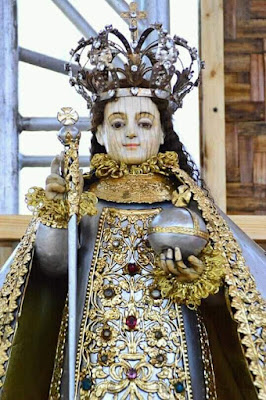Our Mother of Perpetual Help of Baclaran - the Mother of Filipino Catholics

Our Mother of Perpetual Help of Baclaran Wednesdays - a day where the unusual traffic in the streets of Metro Manila leading to Baclaran where people flock the Shrine in Parañaque-Pasay area to pay homage and ask for the Blessed Mother's help and guidance for their everyday life. This Shrine is the National Shrine of Our Mother of Perpetual Help where the Church is open 24 hours a day, 7 Days a week for all people from all walks of life who make a pilgrimage to her shrine, especially on Wednesdays. Among all popular devotions in the country, the devotion to Our Mother of Perpetual Help is one of the most popular in the country and its almost mandatory that all Churches, chapels and homes to have a replica of the icon, regardless of its medium, and hold a novena service every Wednesday. The devotees in turn would testify it efficacy where miracles and answered petitions continues up to this day. The Icon The original Icon in Rome The image of Our Lady of Perpetual...




